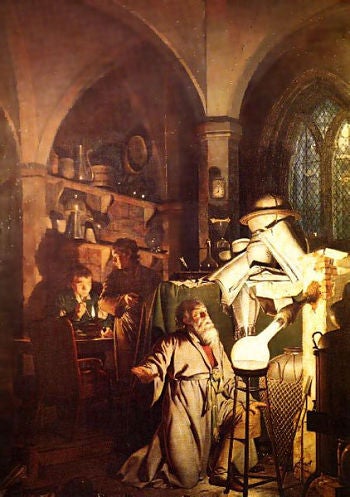
La página que intenta visitar sólo está disponible en inglés. ¡Disculpa!
The page you are about to visit is currently only available in English. Sorry!


(Philosopher's Stone: Courtesy of Wikimedia Commons)
The Philosopher's Stone was a mystical alchemical substance with the ability to turn lead into gold. The likes of Sir Isaac Newton and Nicolas Flamel meditated over its possibilities to turn prevalent and useless materials into highly coveted treasures.
No, it hasn't been discovered yet - but scientists and researchers are looking to carbon dioxide to provide the base materials for what could turn into an environmentally-friendly profit.
According to 350.org, an international campaign focused on bringing CO2 down to safer levels, in 2009, the world had over 387 parts per million CO2 in the atmosphere. The safe limit is 350 and, if we don’t return to these levels by the end of this century, there is a risk for irreparable events including melting ice sheets and released methane from permafrost melt.
Scientists have turned to actively extracting CO2 from the air rather than relying on just reducing emissions.
A popular option has been to sequester and compress CO2 and pump the gas back into the ground 1.5 miles under the ocean. Chevron, Exxon Mobile and Shell recently struck a deal with General Electric to pump 3.3 million tons of CO2 released into the air during the process of mining for natural gas into underground chambers (the equivalent of taking 630,000 cars off the road).
Sure, storing and hiding CO2 might be a temporary fix, but if we have excessive amounts of CO2 we need to get rid of, why not make it useful?
A
If Calera manages to find a way to produce the CO2 cement on a large scale outside of its current demonstration phase, we could soon be driving on climate-friendly roads.
Not to be outdone, scientists from three universities in the
These porous materials in development could line the inside of industrial chimneys, effectively absorbing emissions before they escape the factory. Sounds like a pipe dream to me, but the scientists are optimistic. “It will be a massive challenge, but we have a strong team,” said a senior chemistry lecturer.
If Calera and the UK scientists are able to effectively and safely sequester CO2 into usable and needed products, then we might see the likes of the Philosopher’s Stone at work, turning one of the most prevalent (and despised) gases into a profit.
It’s still early in the developmental stages, but at least businesses and universities are thinking along both practical and profitable lines. If saving the planet isn’t incentive enough to reduce CO2, perhaps profitability is.